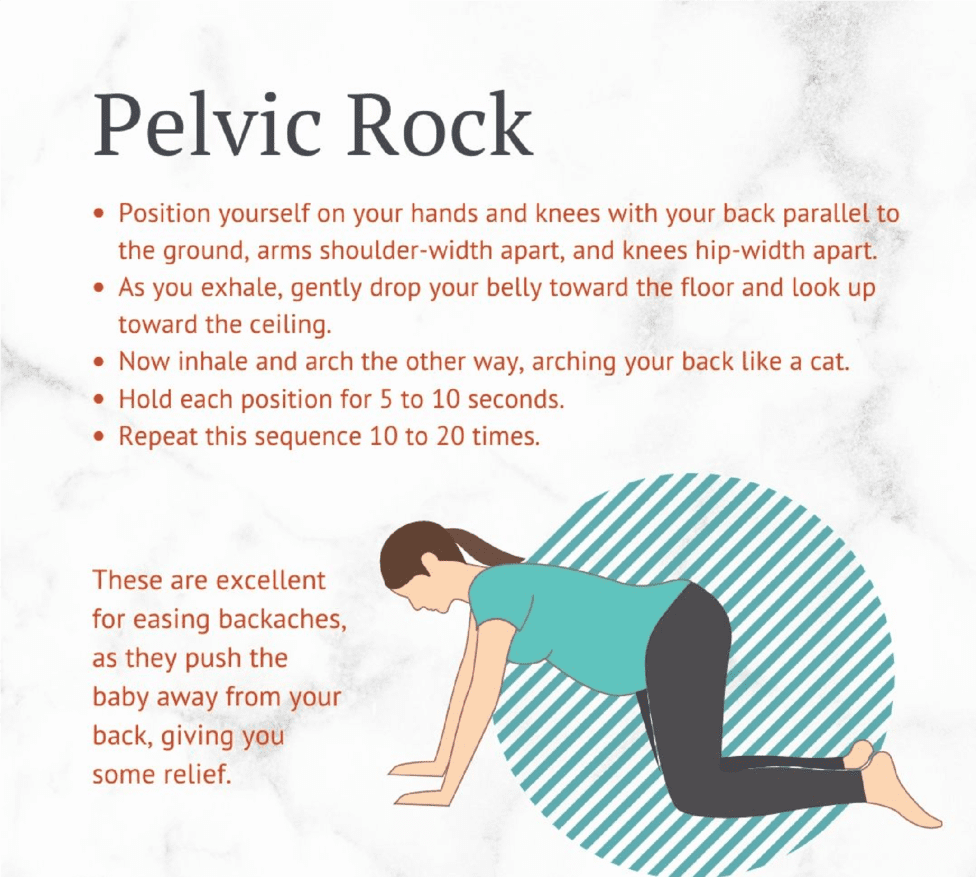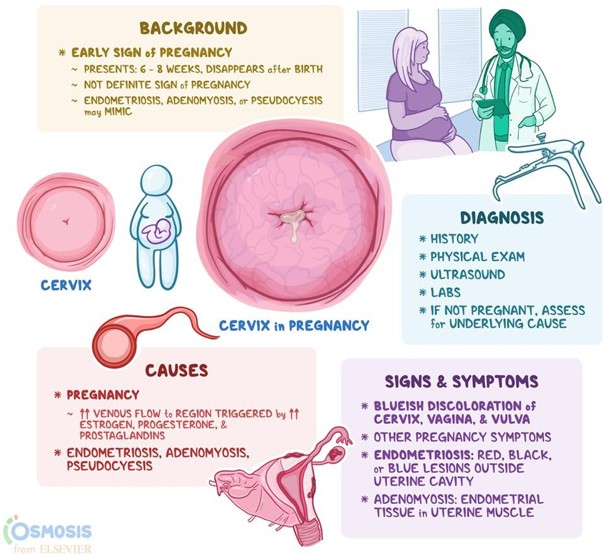A nurse is assisting in the care of a client who is at 34 weeks of gestation and is experiencing lower back pain. Which of the following recommendations should the nurse make?
Sit in a hot tub for 30 min every evening
Raise chairs to keep knees lower than hips
Use the arms to pick up heavy items
Perform pelvic rocking exercises several times per day
The Correct Answer is D
Pelvic rocking exercises can help relieve lower back pain during pregnancy. The client can perform this exercise by getting on their hands and knees, keeping their back straight, and gently rocking their pelvis back and forth. This helps to stretch and strengthen the muscles in the lower back and pelvis.

Sit in a hot tub for 30 min every evening: Hot tubs and hot baths are not recommended during pregnancy as they can raise the body temperature too high, which can be harmful to the developing fetus.
Raise chairs to keep knees lower than hips: This recommendation is more appropriate for promoting good posture and reducing strain on the back, but it may not specifically address lower back pain.
Use the arms to pick up heavy items: It is important to avoid heavy lifting during pregnancy as it can strain the back and increase the risk of injury. It is recommended to use proper lifting techniques, such as bending the knees and using the leg muscles rather than the back muscles, to lift objects.
Nursing Test Bank
Naxlex Comprehensive Predictor Exams
Related Questions
Correct Answer is A
Explanation
Explanation
A. Chadwick’s sign
Chadwick's sign is a characteristic change that occurs during pregnancy, specifically in the cervix, vagina, and vulva. It is characterized by a bluish or purplish discoloration of these areas.
Chloasma in (option B) is incorrect because it is a condition characterized by the development of dark patches on the skin, commonly referred to as "mask of pregnancy." Chloasma typically affects the face, particularly the cheeks, forehead, and upper lip. It is not associated with a change in colour in the vaginal or vulvar area.
Hegar's sign in (option C) is incorrect because it is a softening of the lower uterine segment that can be felt during a pelvic examination. It is not related to the colour changes in the vaginal or vulvar area.
Ballottement in (option D) is incorrect because it is a palpation technique used during a prenatal examination to assess the position of the foetus. It involves the examiner gently pushing against the uterus and feeling a rebound or "floating" movement of the foetus. It does not involve changes in the colour of the vaginal or vulvar area.

Correct Answer is ["C","D","F","G","H"]
Explanation
A.a. Heart rate (98/min): A heart rate of 98/min is within the normal range for adults (60-100 bpm). This does not indicate an immediate need for further evaluation based on the provided data.
B.Blood pressure (112/88 mmHg): The blood pressure reading is within normal limits. This does not suggest an immediate concern.
C. Temperature: The client reports a low-grade fever (38.1°C or 100.5°F), which suggests an ongoing infection or inflammatory process. Further evaluation is necessary.
D.Respiratory complaint: A productive cough with blood-tinged sputum, especially in combination with symptoms such as fatigue, night sweats, and weight loss, is concerning and warrants further evaluation for possible serious conditions such as tuberculosis (TB) or other respiratory infections.
e.Oxygen saturation (98% on room air):The oxygen saturation is normal. This finding does not indicate an immediate need for further evaluation.
F.Weight loss: The client reports a significant weight loss of 26 kg (5 lbs) over the past week. Unintentional weight loss can be a concerning symptom and may indicate an underlying medical condition that requires further investigation.
G.Sputum characteristics: Blood-tinged sputum, especially with other symptoms like cough, fever, and night sweats, can be indicative of serious conditions such as TB or other respiratory infections and needs further evaluation.
H.Travel history: Recent travel to a region where certain infectious diseases are prevalent (such as TB) is a critical factor that requires further evaluation in the context of the client's symptoms.
Whether you are a student looking to ace your exams or a practicing nurse seeking to enhance your expertise , our nursing education contents will empower you with the confidence and competence to make a difference in the lives of patients and become a respected leader in the healthcare field.
Visit Naxlex, invest in your future and unlock endless possibilities with our unparalleled nursing education contents today
Report Wrong Answer on the Current Question
Do you disagree with the answer? If yes, what is your expected answer? Explain.
Kindly be descriptive with the issue you are facing.
